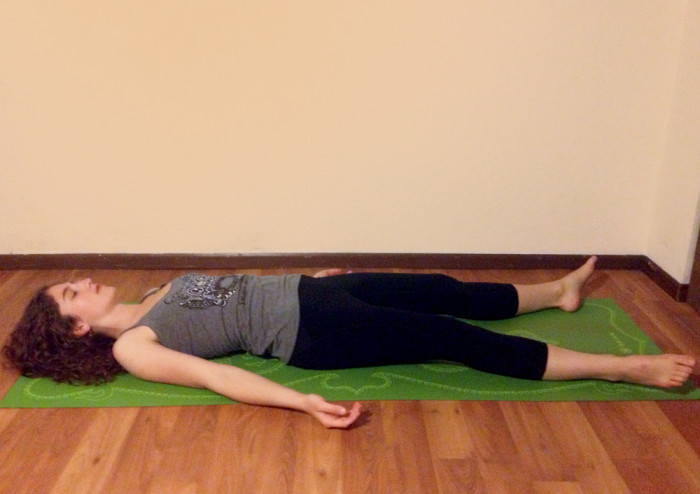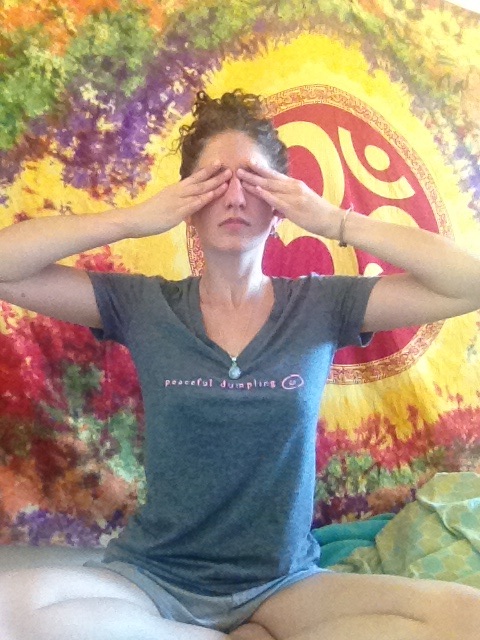I remember from a young age my mother telling me whenever I was upset or frustrated to take a deep breath and calm down. Surprisingly, the slow inhale and exhale helped release tension and relieve the stress I was feeling at the time. What I didn’t understand as a child, and what I’ve come to realize now as a yogini, is that our breath is the powerful key into unlocking mental clarity and stillness of the mind.
Pranayama or “extension of the life force” is the practice of controlling our breath and lies at the heart of yoga. While the poses (asanas) are part of yoga, they are not the main focus of the practice. Rather, the focus is on meditation, achieving supreme consciousness and stilling the mind, and breathing exercises that foster these things are essential for every yoga practice. Yet, even if you are a not a yogi, pranayama exercises can be beneficial since they cultivate a healing breath that help us be more relaxed, aware of our inner selves and de-stress.
Establishing breath control helps to create self-control. By teaching ourselves how to control one seemingly involuntary part of our body, we can then gradually gain the power to control the rest of our actions. Our breath follows with our mood; when we are angry or frightened, for instance, our breath increases to a faster pace. When we are calm and our breath is slower and more soothing. If we are able to control our life force and come into a more calming breath, we can then have the ability to control our mental state and emotions.
Below are the three best pranayama exercises to quiet our mind, foster inner peace and learn to relax even during the most stressful situations.
1. Three-part breath

Lie on your back and allow the rhythmic pattern of your breathing vibrate across your body. Come into your breath by inhaling and exhaling through your nose slowly and deeply. Try not to concentrate on any thoughts that may arise, instead letting them filter through your mind, gearing your attention towards your breath instead of your mind’s daily wanderings.
When you are ready, breathe in deeply through your nose and fill your belly full of air. Hold at the top of the inhalation, feel your stomach expand and then release gently, letting go of all the air that once filled your belly. Repeat this breath for five rounds.
Next, inhale again deeply through your nose and expand the belly with air. Once your belly is full of air, draw in more breath to expand into the rib cages and widen them apart. Hold for a moment and then release air from the rib cages first and then belly. Repeat for five rounds of breath.
And to finish this series, fill up your belly and rib cage with air again, and then draw in more breath to fill the upper chest, causing your heart center to expand. Hold here for a moment and then let go of the breath starting with the upper chest then rib cage then belly. Repeat this breath for 10 rounds.

The focus of this relaxing breath exercise is to make sure your inhale and exhale are both at equal lengths. Begin in a comfortable seated position and count to four as you inhale. As you exhale also count to four to ensure both inhalation and exhalation are equal.
This final breathing exercise is a popular favorite in relieving anxiety. Close your throat slightly and relax your jaw and shoulders. Gently have your lips closed and your teeth slightly apart as you cover your ears with your thumbs and your eyes with your fingers. Inhale and then breathe out slowly, making a long, humming sound. Keep exhaling for as long as you can and then repeat. The long, smooth exhalation diverts your mind away from daily stressors and calms your nerves.
Related: 4 Kundalini Yoga Poses for Calm and Relaxation
Also by Jessica: Natural Beauty Tips for Soft, Kissable Lips
4 Ways to Be More Peaceful in Your Everyday Life
__
Photo: Jessica Renae





